Results 11,551 to 11,560 of 12089
Thread: Anandtech News
-
08-16-22, 03:39 PM #11551
Anandtech: AMD Announces Ryzen 7000 Reveal Livestream for August 29th
In a brief press release sent out this morning, AMD has announced that they will be delivering their eagerly anticipated Ryzen 7000 unveiling later this month as a live stream. In an event dubbed “together we advance_PCs”, AMD will be discussing the forthcoming Ryzen 7000 series processors as well as the underlying Zen 4 architecture and associated AM5 platform – laying the groundwork ahead of AMD’s planned fall launch for the Ryzen 7000 platform. The event is set to kick off on August 29th at 7pm ET (23:00 UTC), with CEO Dr. Lisa Su and CTO Mark Papermaster slated to present.
AMD first unveiled their Ryzen 7000 platform and branding back at Computex 2022, offering quite a few high-level details on the forthcoming consumer processor platform while stating it would be launching in the fall. The new CPU family will feature up to 16 Zen 4 cores using TSMC's optimized 5 nm manufacturing process for the Core Complex Die (CCD), and TSMC’s 6nm process for the I/O Die (IOD). AMD has not disclosed a great deal about the Zen 4 architecture itself, though their Computex presentation has indicated we should expect a several percent increase in IPC, along with a further several percent increase in peak clockspeeds, allowing for a 15%+ increase in single-threaded performance.
The Ryzen 7000 series is also notable for being the first of AMD’s chiplet-based CPUs to integrate a GPU – in this case embedding it in the IOD. The modest GPU allows for AMD’s CPUs to supply their own graphics, eliminating the need for a discrete GPU just to boot a system while, we expect, providing enough performance for basic desktop work.
The new CPU family will also come with a new socket and motherboard platform, which AMD is dubbing AM5. The first significant socket update for AMD in six years will bring with it a slew of changes and new features, including a switch to an LGA-style socket (LGA1718) and support for DDR5 memory. Providing the back-end for AM5 will be AMD’s 600 series chipsets, with AMD set to release both enthusiast and mainstream chipsets. PCIe 5.0 will also be supported by the platform, but in the interest of keeping motherboard prices in check, it is not a mandatory motherboard feature.AMD Desktop CPU Generations AnandTech Ryzen 7000
(Raphael)Ryzen 5000
(Vermeer)Ryzen 3000
(Matisse)CPU Architecture Zen 4 Zen 3 Zen 2 CPU Cores Up To 16C / 32T Up To 16C / 32T Up To 16C / 32T GPU Architecture RDNA2 N/A N/A GPU Cores TBD N/A N/A Memory DDR5 DDR4 DDR4 Platform AM5 AM4 AM4 CPU PCIe Lanes 24x PCIe 5.0 24x PCIe 4.0 24x PCIe 4.0 Manufacturing Process CCD: TSMC N5
IOD: TSMC N6CCD: TSMC N7
IOD: GloFo 12nmCCD: TSMC N7
IOD: GloFo 12nm
The remaining major disclosures that AMD hasn’t made – and which we’re expecting to see at their next event – will be around the Zen 4 architecture itself, as well as information on specific Ryzen 7000 SKUs. Pricing information is likely not in the cards (the industry has developed a strong tendency to announce prices at the last minute), but at the very least we should have an idea of how many cores to expect on the various SKUs, as well as where the official TDPs will land in this generation given AM5’s greater power limits.
Meanwhile, AMD’s press release does not mention whether the presentation will be recorded or live. Like most tech companies, AMD switched to pre-recorded presentations due to the outbreak of COVID-19, which in turn has been paying dividends in the form of breezier and more focused presentations with higher production values. While relatively insignificant in the big picture of things, it will be interesting to see whether AMD is going back to live presentations for consumer product unveils such as this.
In any case, we’ll find out more during AMD’s broadcast. The presentation is slated to air on August 29th at 7pm Eastern, on AMD’s YouTube channel. And of course, be sure to check out AnandTech for a full rundown and analysis of AMD’s announcements.
More...
-
08-19-22, 04:58 PM #11552
Anandtech: Samsung's $15 Billion R&D Complex to Overcome Limits of Semiconductor Scal
Samsung on Friday broke ground for a new semiconductor research and development complex which will design new fabrication processes for memory and logic, as well as conduct fundamental research of next-generation technologies and materials. The company plans to invest KRW 20 trillion ($15 billion) in the new R&D facility by 2028.
To make more competitive logic and memory chips, companies like Samsung have to innovate across many directions, which includes new materials (for fins, for gates, for contacts, for dielectrics, just to name a few), transistor architecture, manufacturing technologies, and design of actual devices. In many cases, companies physically separate fundamental research and development of actual process technologies, but the new R&D center will conduct operations across virtually all fronts except device design.
The new facility will handle advanced research on next-generation transistors and fabrication processes for memory and logic chips as well as seek for new technologies to 'overcome the limits of semiconductor scaling.' Essentially, this means researching new materials and manufacturing techniques as well as developing actual production nodes. Given that all of these R&D operations require large scale nowadays, it is not particularly surprising that it will require Samsung to invest $15 billion in the center over the next six years.
Spreading fundamental research and applied development operations across different locations helps with bringing new talent onboard (e.g., people with academia background may be unwilling to relocate too far away from their current homes), but also creates discrepancy within one company as feedback from different departments gets slower. Ideally, scientists doing pathfinding and research, developers designing new production nodes, fab engineers, and device developers should work together on a site and get feedback from each other. But while Samsung's new R&D hub is not meant for this, it will still bring scientists and node developers together, which is a big deal.
The new R&D center will be located at Samsung's campus near Giheung, South Korea, and will be occupy around 109,000 m2 (~20 football fields). To put the number into a more relevant context, Apple's corporate headquarters — Apple Park — occupies around 259,000 m2 and houses over 12,000 of employees that do everything from management to research to product development.
The new R&D facility will work in concert with Samsung's existing R&D line in Hwaseong (which works on memory, system LSI, and foundry technologies) and the company's production complex in Pyeongtaek that can produce both DRAM (using 10nm-class technologies) and logic chips (using 5nm-class and thinner nodes). It will also be Samsung's 12th semiconductor R&D center. Meanwhile, this will be the company's first semiconductor R&D facility of this scale.
Three years ago Samsung announced plans to spend KRW 133 trillion ($100 billion today, $115 billion in 2019) on semiconductor R&D by 2030. The company allocated KRW 73 trillion ($54.6 billion) on R&D operations in South Korea, so investing $15 billion in a single research and development facility aligns perfectly with this plan.
"Our new state-of-the-art R&D complex will become a hub for innovation where the best research talent from around the world can come and grow together," said President Kye Hyun Kyung, who also heads the Device Solutions (DS) Division. "We expect this new beginning will lay the foundation for sustainable growth of our semiconductor business."
Source: Samsung
More...
-
08-23-22, 09:40 PM #11553
Anandtech: ASUS Unveils Crosshair X670E Gene, Premium Micro-ATX AM5 Motherboard for R
Over the years, multiple motherboards have captivated the market at various price points. Models like the Hero and the Formula are staples of ASUS's premium but popular ROG-themed offerings. One such series that was once the staple of ASUS's Intel models based on the micro-ATX form factor was the Gene, last seen in the days of Intel's 8th and 9th Gen Core series (2019). In what looks to be a resurrection of the Gene series for the release of AMD's Ryzen 7000 processors based on its latest 5nm Zen 4 microarchitecture, ASUS has announced that the Gene is back via the ROG Crosshair X670E Gene.
Throughout the years, the ROG Gene series has been synonymous with highly premium micro-ATX offerings, and it looks as though the ASUS ROG Crosshair X670E Gene is no different this time. Some of the ROG Crosshair X670E Gene's main features include a full-length PCIe 5.0 x16 slot, one PCIe 4.0 x1 slot, and a single PCIe 4.0 x4 M.2 slot. ASUS includes another expansion slot next to the two DDR5 memory slots for an included ROG Gen-Z.2 M.2 add-in card with support for up to two PCIe 5.0 x4 M.2 drives.
The ASUS ROG Crosshair X670E Gene will also feature a 16+2 phase power delivery with premium 110 A power stages, an Intel-based 2.5 GbE, and Wi-Fi 6E networking pairing, as well as support for USB 3.2 G2x2 with Quick Charge 4+ (60 W) capability. ASUS also states that it will also have rear panel USB4 support, although ASUS hasn't provided full specifications to us at this time.
At the time of writing, ASUS hasn't revealed much for the ROG Crosshair X670E Gene, nor how much it is expected to cost or when it might hit retail shelves.
More...
-
08-24-22, 03:49 PM #11554
Anandtech: Intel Kicks Off Fab Co-Investment Program with Brookfield: New Fabs to be
Intel this week introduced its new Semiconductor Co-Investment Program (SCIP) under which it will build new manufacturing facilities in collaboration with investment partners – a sharp departure from the company's traditional stance of wholly owning its logic fabs. As part of its SCIP initiative, Intel has already signed a deal with Brookfield Asset Management, which will provide Intel about $15 billion to build its fab new fab in Arizona in exchange for a 49% stake in the project. Furthermore, similar co-investment models are set to be used for other fabs in the future.
New Fabs Are Getting Costlier
When Intel announced plans to produce chips for other companies last year (and to a large degree become a contract maker of semiconductors), it marked a significant shift in the company's business strategy that required Intel to build new manufacturing capacity not only for itself, but for its future clients as well. But modern fabs are exceptionally expensive, as new manufacturing tools — such as contemporary extreme ultraviolet (EUV) lithography scanners — are prohibitively expensive, which makes it considerably harder for the company to execute on its IDM 2.0 strategy from capital point of view.
To get sufficient capacity for its own products and for its fabless clients in the mid-term future, Intel had to engage into several capital-intensive projects: the $7.1 billion fab expansion in Ireland (which has probably been completed); two new fabs — Fab 52 and Fab 62 — at its Ocotillo site near Chandler, Arizona that were expected to cost $20 billion; an all-new semiconductor production campus in Ohio that will need $20 billion initially and will be a size of a small town as well as will cost up to $100 when fully built; and an all-new production facility near Magdeburg, Germany (which will require an investment of €17 billion).
Intel is set to get billions in incentives from local authorities as well as subsidies from federal governments of the U.S. and Germany to build these fabs. But modern EUV-capable semiconductor production facilities cost about $10 billion (large gigafabs with a capacity of 100,000 wafer starts per month cost north from $20 billion), so financing these projects is particularly challenging even for Intel. Therefore, in a bid to build its new facilities in Arizona the company decided to engage into its co-investment program with Brookfield.
Intel to Maintain Majority Ownership
Under the terms of the deal, the two companies will co-invest $30 billion in the ongoing expansion of the site with Intel financing 51% and Brookfield backing 49% of the total project cost. Previously Intel planned to invest $20 billion in its Fab 52 and Fab 62, but together with Brookfield the sum has increased to $30 billion. In addition to getting access to additional funding, Intel could also take advantage of Brookfield's experience in developing infrastructure assets.
By working together with Brookfield, Intel will get $15 billion in free cash flow and will be able to invest more into its new fabs without raising new debt. Also, this will allow Intel to invest more in other projects while "continuing to fund a healthy and growing dividend." Meanwhile, the $15 billion benefit is "expected to be accretive to Intel’s earnings per share during the construction and ramp phase."
Perhaps the key part of the announcement is the fact that Intel plans to sign similar deals with co-investors in the future, so expect its upcoming manufacturing capacity to be co-funded by others. Intel will retain majority ownership and operating control of its chip factories, but it will not own 100% of them. Previously the company rarely engaged into joint ventures, the most notable exceptions being IMFT, the company's NAND flash joint-venture with Micron, and participating in ASML's customer co-investment program from early 2010s.
"This landmark arrangement is an important step forward for Intel’s Smart Capital approach and builds on the momentum from the recent passage of the CHIPS Act in the U.S.," said David Zinsner, Intel CFO. "Semiconductor manufacturing is among the most capital-intensive industries in the world, and Intel’s bold IDM 2.0 strategy demands a unique funding approach. Our agreement with Brookfield is a first for our industry, and we expect it will allow us to increase flexibility while maintaining capacity on our balance sheet to create a more distributed and resilient supply chain."
Co-ownership of semiconductor manufacturing facilities is not something unheard of the industry. China's Semiconductor Manufacturing International Co. (SMIC) invests in new fabs together with local authorities of Chinese provinces as well as various asset management companies and/or investment banks (many of which are controlled by China's federal government). GlobalFoundries used to be co-owned by AMD and Mubadala before the latter acquired AMD's stake as the chip developer badly needed money. Yet, a co-investment program is something particularly new for Intel, which has always owned 100% of its manufacturing facilities. Ultimately, as it looks like as the semiconductor production is getting more expensive, there is a first time for anything.
More...
-
08-25-22, 03:54 PM #11555
Anandtech: The Cooler Master XG850 Plus Platinum PSU Review: Quality Plus RGB
Today we are having a look at the new XG Plus Platinum series, the latest power supply family from prolific PC peripherals producer Cooler Master. Designed to offer a quality PSU with an extra dash of flair, the RGB fan (and RGB display) equipped XG Plus Platinum is a PSU that's not quite like anything else on the market. The XG family ranges from 650 to 850 Watts, and today we're evaluating the most powerful unit in the series, the 850W XG850 Plus Platinum.
More...
-
08-29-22, 12:21 PM #11556
Anandtech: AMD Ryzen 7000 "together we advance_PCs” Live Blog (7pm ET/23:00 UTC)
At long last the date is here. AMD this evening will be broadcasting their "together we advance_PCs” event, which will be focused around the upcoming launch of their next-generation Ryzen 7000 processors.
AMD first unveiled their Ryzen 7000 platform and branding back at Computex 2022, offering quite a few high-level details on the forthcoming consumer processor platform while stating it would be launching in the fall. The new CPU family will feature up to 16 Zen 4 cores using TSMC's optimized 5 nm manufacturing process for the Core Complex Die (CCD), and TSMC’s 6nm process for the I/O Die (IOD). AMD has not disclosed a great deal about the Zen 4 architecture itself, though their Computex presentation has indicated we should expect a several percent increase in IPC, along with a further several percent increase in peak clockspeeds, allowing for a 15%+ increase in single-threaded performance.
The Ryzen 7000 series is also notable for being the first of AMD’s chiplet-based CPUs to integrate a GPU – in this case embedding it in the IOD. The modest GPU allows for AMD’s CPUs to supply their own graphics, eliminating the need for a discrete GPU just to boot a system while, we expect, providing enough performance for basic desktop work.
Tonight's presentation, in turn, should finally see AMD moving on to talking about launch details for the Ryzen 7000 CPUs and the associated AM5 platform. That should include performance expectations and a bit more on the motherboards. And, of course, information on the specific chip SKUs that will be hitting the market, including core configurations, clockspeeds, and prices. With any luck we may get a bit more on the Zen 4 architecture as well, as alongside CEO Dr. Lisa Su, CTO Mark Papermaster is slated to present part of the event.
The event is set to kick off tonight, August 29th, at 7pm ET (23:00 UTC). So be sure to join us for our live blog coverage around the announcement of the next generation of AMD desktop CPUs.
More...
-
08-29-22, 09:56 PM #11557
Anandtech: AMD Announces B650 Extreme Chipset for Ryzen 7000: PCIe 5.0 For Mainstream
Over the last couple of months, the rumor mill surrounding AMD's impending Ryzen 7000 processors for desktops has been in overdrive. Although Lisa Su unveiled Zen 4 back at CES 2022, it's been anticipated that the new AM5 platform would include multiple chipsets, much like AM4 has over 500+ motherboard lifespan from X370, X470, X570, and every chipset in between.
AMD announced its X670E, X670, and B650 chipsets during the AMD Keynote at Computex 2022, and this evening, AMD has announced a fourth chipset for Ryzen 7000, the B650E chipset. The B650E chipset will run alongside the already announced B650 chipset, but as it's part of AMD's 'Extreme' series of chipsets, it will benefit from PCIe 5.0 lanes to at least one M.2 slot, as well as optional support for PCIe 5.0 to a PCIe graphics slot, features not available with standard B650 boards.
During AMD's Keynote at Computex 2022, AMD's CEO Lisa Su unveiled three AM5 chipsets designed to harness the power of its 5 nm Zen 4 cores within the Ryzen 7000 processors. We already knew the AM5 socket was based around a Lane Grid Array (LGA) socket with 1718 pins, aptly named LGA1718. Some of the significant benefits coming to AM5 include native PCIe 5.0 support from the CPU, not just for use with the PCIe slots, but also in the way of PCIe 5.0 storage, where the first consumer drives are expected to start rolling out in November 2022.
AMD's latest announcement of the B650E (Extreme) chipset gives motherboard vendors and users the option of a lower-cost platform but without sacrificing the longevity and expansion support of PCIe 5.0. The X670E chipset is reserved for its most premium models, such as the flagship ASUS ROG Crosshair X670E Extreme motherboard, unveiled at Computex 2022.
Using PCIe 5.0 lanes requires a more premium PCB, usually with more layers which allows the tracks to keep signal integrity, but this typically adds cost. The existence of the B650E chipset will enable vendors to use more expensive PCIe 5.0 laning with more modest controller sets, which allow vendors to offset the cost. Ideally, it gives users a broader and more future-proof platform to upgrade with, but without breaking the bank on unnecessary controller sets; users wanting the best controller sets should opt for X670 or X670E.AMD AM5 Chipset Comparison Feature X670E X670 B650E B650 CPU PCIe (PCIe) 5.0 (Mandatory)
2 x16 Slots4.0
(5.0 Optional)4.0
(5.0 Optional)4.0
(5.0 Optional)CPU PCIe (M.2 Slots) At Least 1 PCIe 5.0 Slot PCIe 4.0
(5.0 Optional)Total CPU PCIe Lanes 24 SuperSpeed USB 20Gbps
(USB 3.2 Gen 2x2)Up To 14 DDR5 Support Quad Channel (128-bit bus)
Speeds TBDWi-Fi 6E Yes Overclocking Support Y Y Y Y Available September 2022 October 2022
This ultimately means that AMD will have a mainstream platform that has PCIe 5.0 by default (B650E) and a lower-cost alternative with just PCIe 4.0 lanes to the PEG and M.2 slots. AMD is strongly prodding motherboard vendors to offer at least one PCIe 5.0 M.2 slot for storage on most of their boards, as this is one of the main benefits of AMD's AM5 platform.
As announced by AMD during its together we advance_PCs event, the Ryzen 7000 processors for desktop will launch on September 27th, with both motherboards from the X670E and X670 chipsets. The motherboards featuring the B650E and B650 chipsets will be available to purchase at a later date in October.
More...
-
08-29-22, 09:56 PM #11558
Anandtech: AMD Details Ryzen 7000 Launch: Ryzen 7950X and More, Coming Sept. 27th
AMD’s "together we advance_PCs”l ivestream presentation just wrapped up moments ago, where AMD CEO Dr. Lisa Su set the stage for the release of the next generation of AMD Ryzen desktop CPUs. Building off of AMD’s Ryzen 7000 announcement back at Computex 2022, the eagerly anticipated presentation laid out AMD’s launch plans for their first family of Zen 4 architecture-based CPUs, which will see AMD kick things off with a quartet of enthusiast-focused chips. Topping out with the 16 core Ryzen 9 7950X, AMD’s Ryzen 7000 chips will be launching in just over 4 weeks’ time, on September 27th, with AMD expecting to handily retake the performance crown across virtually all categories of the PC CPU space, from gaming to content creation.
Driving AMD’s gains in this newest generation of desktop CPUs is a combination of architectural improvements underpinning the Zen 4 architecture, as well as moving production of the CPU core chiplets to TSMC’s leading-edge 5nm process. The combination of which will allow AMD to deliver what they are saying is now a 13% increase in IPC over their Zen 3 architecture – up from an 11% claim as of Computex – as well as a sizable increase in CPU clockspeeds. The top-end Ryzen 9 7950X will have a maximum turbo clockspeed of 5.7GHz, 800MHz (16%) higher than the equivalent Ryzen 9 5950X. As a result, AMD expects to deliver a 29% generational increase in single-threaded performance, and even more in multi-threaded workloads.
More...
-
08-30-22, 04:28 PM #11559
Anandtech: AMD EXPO Memory Technology: One Click Overclocking Profiles For Ryzen 7000
During AMD's 'together we advance_PCs event, the company unveiled its latest Zen 4-based Ryzen 7000 processors to the world, as well as its AM5 platforms, including X670E, X670, B650E, and B650. AMD also announced what it calls AMD EXPO, a new technology for overclocking DDR5 memory. In conjunction with this announcement, AMD has partnered with memory manufacturers including ADATA, Corsair, G.Skill, GeIL, and Kingston Technology to bring AMD Ryzen 7000 optimized kits of DDR5 memory to the market, with 15 (or more) of these set to be available on launch day on September 27th.
AMD EXPO stands for EXtended Profiles for Overclocking and is designed to provide users with high-end memory overclocking when used in conjunction with AMD's Ryzen 7000 series processors. Similar to Intel's preexisting X.M.P (Extreme Memory Profile) technology found on most consumer-level memory kits designed for desktop Intel platforms, AMD's EXPO technology aims to do the same, but as an open standard with an emphasis on providing the best settings for AMD platforms.
AMD EXPO Technology: Like X.M.P, but Optimized for Ryzen 7000
The premise of AMD EXPO is that it will be a one-click DDR5 overclocking function for AM5 motherboards, and AMD claims that EXPO overclocked memory kits will offer up to 11% higher gaming performance at 1080p, although it hasn't quantified how it came to this figure. AMD did, however, state that it is expecting (at least) 15 kits of DDR5 memory with AMD EXPO at launch on September 27th, with rates of up to DDR5-6400.
AMD EXPO, on the surface, is essentially an X.M.P profile specifically designed for AMD's Ryzen 7000 (Zen 4) processors. Although AMD hasn't gone into finer details on how it differs from X.M.P, beyond the fact that it will be royalty and licensing fee free.
It is worth noting that DDR5 memory with X.M.P profiles will be supported on Ryzen 7000 platforms. Still, AMD EXPO adds an additional layer of 'compatibility' with AMD systems, as EXPO DIMMs will be optimized for use on AMD platforms (as opposed to X.M.P. kits chiefly being optimized for Intel platforms).
AMD EXPO does have one caveat associated with it; AMD EXPO is classed as overclocking in AMD's own eyes, and according to its footnotes, it does void the warranty.
The footnote on the AMD EXPO landing page states as follows:
Overclocking and/or undervolting AMD processors and memory, including without limitation, altering clock frequencies / multipliers or memory timing / voltage, to operate outside of AMD's published specifications will void any applicable AMD product warranty, even when enabled via AMD hardware and/or software. This may also void warranties offered by the system manufacturer or retailer. Users assume all risks and liabilities that may arise out of overclocking and/or undervolting AMD processors, including, without limitation, failure of or damage to hardware, reduced system performance and/or data loss, corruption or vulnerability. GD-106
Similar to how Intel operates with X.M.P profiles being applied, using AMD EXPO will technically void the warranty, which seems odd given this is AMD's technology designed to offer adopters of Ryzen 7000 and AM5 an additional boost to performance through certification. When overclocking, doing so is always at the user's risk. Still, with a certification such as AMD EXPO offers, it seems a little odd that AMD is recommending optimized memory for its platform but also voids the processor's warranty.
AMD EXPO: 15 Different DDR5 Kits Available At Launch
As we previously mentioned, AMD says that there should be 15 kits of DDR5 with support for AMD EXPO ready to launch when Ryzen 7000 is released on September 27th. Some of these kits include ADATA Caster RGB and Lancer RGB models, with GeiL EVO V models and Kingston Technology Fury Beast and RGB enabled models.
Corsair and G.Skill sent us information on what it is launching alongside Ryzen 7000 on September 27th. Starting with G.Skill, it announced three new kits of DDR5 for Ryzen 7000, including its Trident Z5 Neo RGB, regular Trident Z5 Neo, and the Flare X5 series. The flagship for its AMD EXPO memory is the Trident Z Neo, with four different varieties of DDR5-6000 set for launch, each with different latencies and capacities, as outlined in the table below.
The Trident Z5 Neo and RGB Neo share the same specifications, but the RGB version includes a customizable LED lightbar. The top SKU from G.Skill with AMD EXPO at launch will be the DDR5-6000 CL30-38-38-96 kit, which is available in capacities of 2 x 16 GB (32 GB). The Flare X5 replaces the older Flare X series for DDR4 and features a lower profile heatsink at just 33 mm tall; this makes it more compatible for users with space restrictions of large tower coolers that restrict larger and more aggressive heatsink designs such as the Trident Z5 Neo.G.Skill AMD EXPO DDR5 Memory (as of 08/30) Memory Frequency CL Timing Capacity Trident Z5 Neo + RGB Neo DDR5-6000 30-38-38-96 2 x 16 GB 30-40-40-96 2 x 32 GB 32-38-38-96 2 x 16 / 2 x 32 GB 36-36-36-96 2 x 16 GB Flare X5 DDR5-5600 28-34-34-89 2 x 16 / 2 x 32 GB 30-36-36-89 36-36-36-89
Focusing on what Corsair has announced for its AMD EXPO certified memory, it has two new varieties of DDR5 memory. This includes new premium Dominator Platinum RGB DDR5, Vengeance DDR5, and non-RGB enabled Vengeance DDR5, all designed specifically for AMD and Ryzen 7000. The top SKU from Corsair is the Dominator Platinum RGB 32 GB (2 x 16 GB) kit with speeds of DDR5-6000 and latencies of CL30-36-36-76. The Dominator Platinum RGB DDR5 memory for AMD EXPO will also be available in 64 GB (2 x 32 GB) kits, with speeds of DDR5-5600 CL36 and DDR5-5200 CL40 varieties.
The Corsair Vengeance RGB with AMD EXPO profiles will reach up to DDR5-6000 CL30 but will also be available in DDR5-5600 CL36 and DDR5-5200 CL40. At the time of writing, the non-RGB enabled Vengeance for AM5 will max out at DDR5-5600 CL36, with options also available in DDR5-5200 CL40 in both 2 x 16 GB (32 GB) and 2 x 32 GB (64 GB) kits.
Gallery: AMD EXPO Memory Kits





The AMD EXPO DDR5 memory kits will launch at the same time as AMD's Ryzen 7000 desktop processors and AMD X670E and X670 motherboards: September 27th. None of the memory vendors have provided us with any pricing at the time of writing.
Source: AMD, Corsair, & G.Skill
More...
-
09-01-22, 09:31 AM #11560
Anandtech: The MSI Titan GT77 Review: Desktop-Class Core i9-12900HX Tested
MSI is synonymous with gaming notebooks and the company’s Raider lineup is one of the top gaming platforms on the market. But, MSI has always kept a tiny bit back, reserving their most interesting ideas and most powerful configurations for their Titan lineup.
MSI’s Titan series always offers something special. Something different. Something unique. Look back to the insane MSI GT80 Titan from 2015 which featured a full desktop keyboard melded onto an 18.4-inch notebook computer. The MSI GT76 Titan packed in a full desktop Core i9-9900K processor into a more traditional 17-inch form factor.
Today we are looking at the latest iteration from MSI; the Titan GT77. Featuring a desktop-inspired Core i9-12900HX processor and an NVIDIA RTX 3080 Ti Laptop GPU, the GT77 is one of the most powerful notebooks on the market today.
More...
Thread Information
Users Browsing this Thread
There are currently 18 users browsing this thread. (0 members and 18 guests)




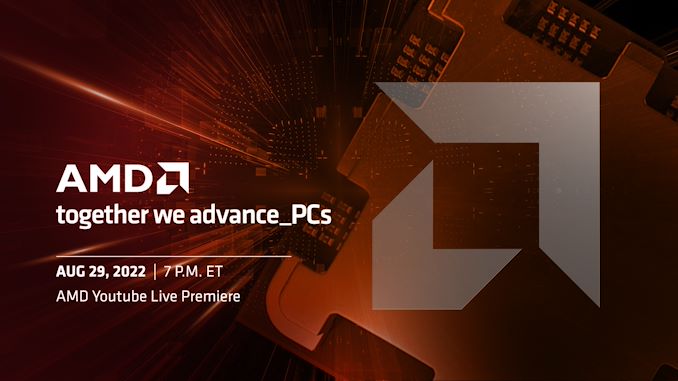
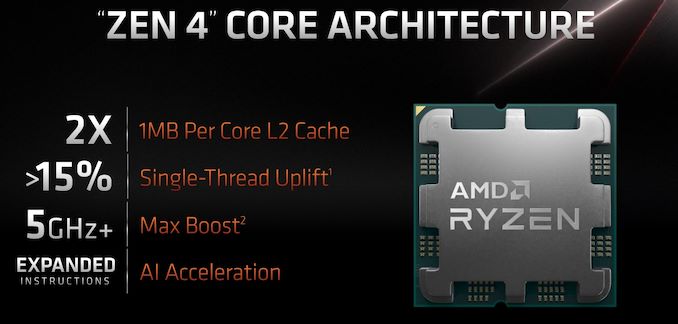

 Quote
Quote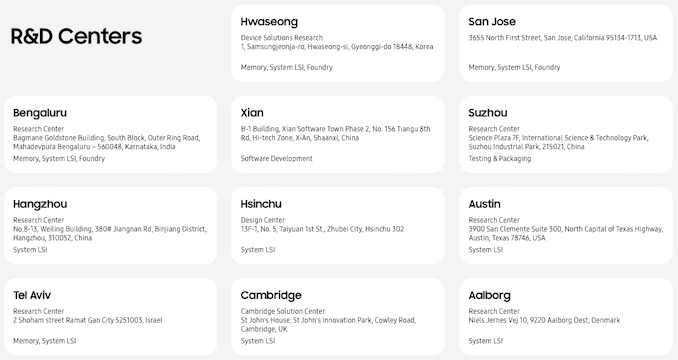
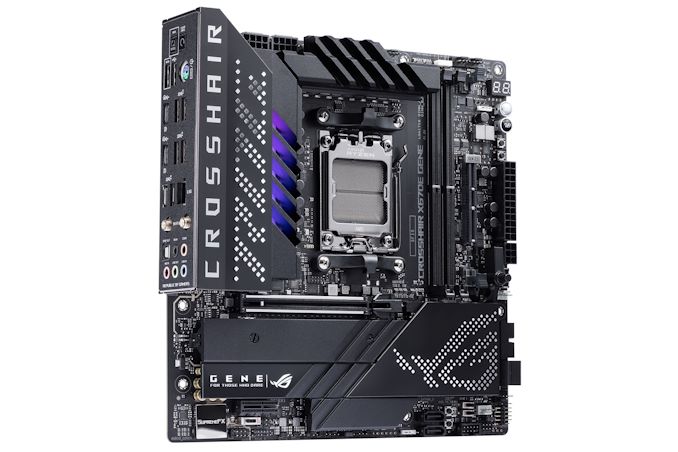
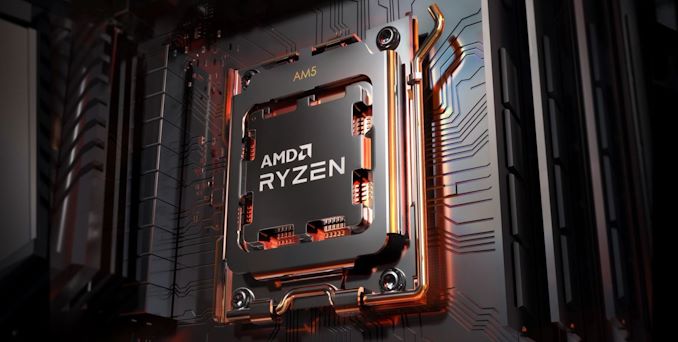

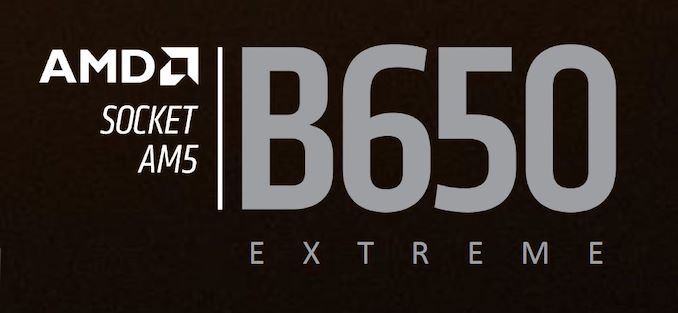


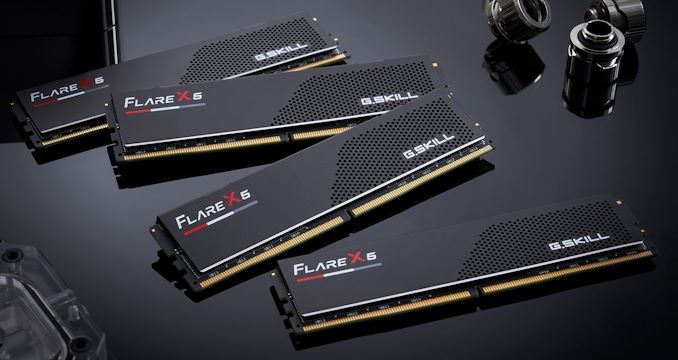

















Bookmarks